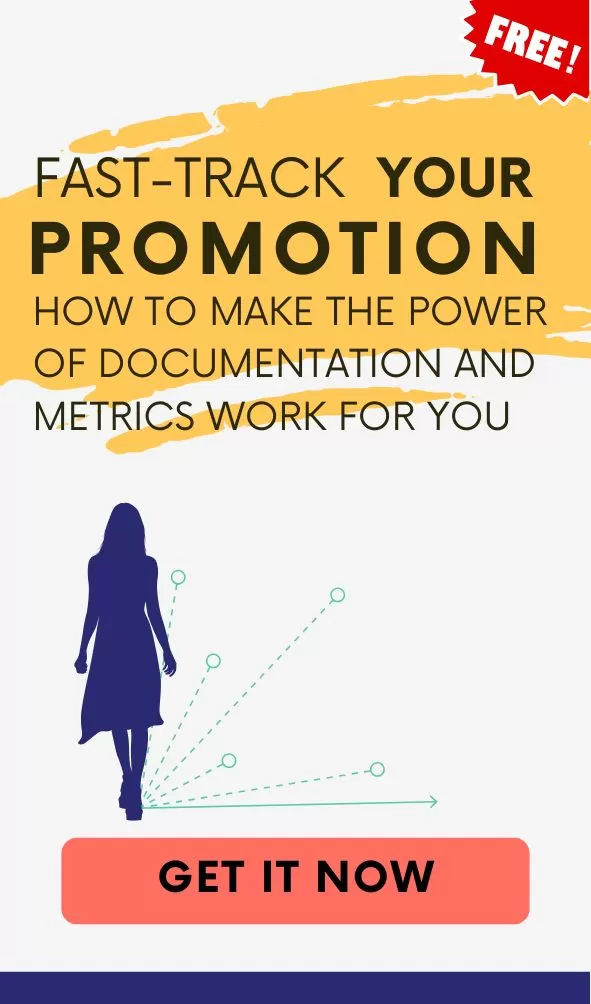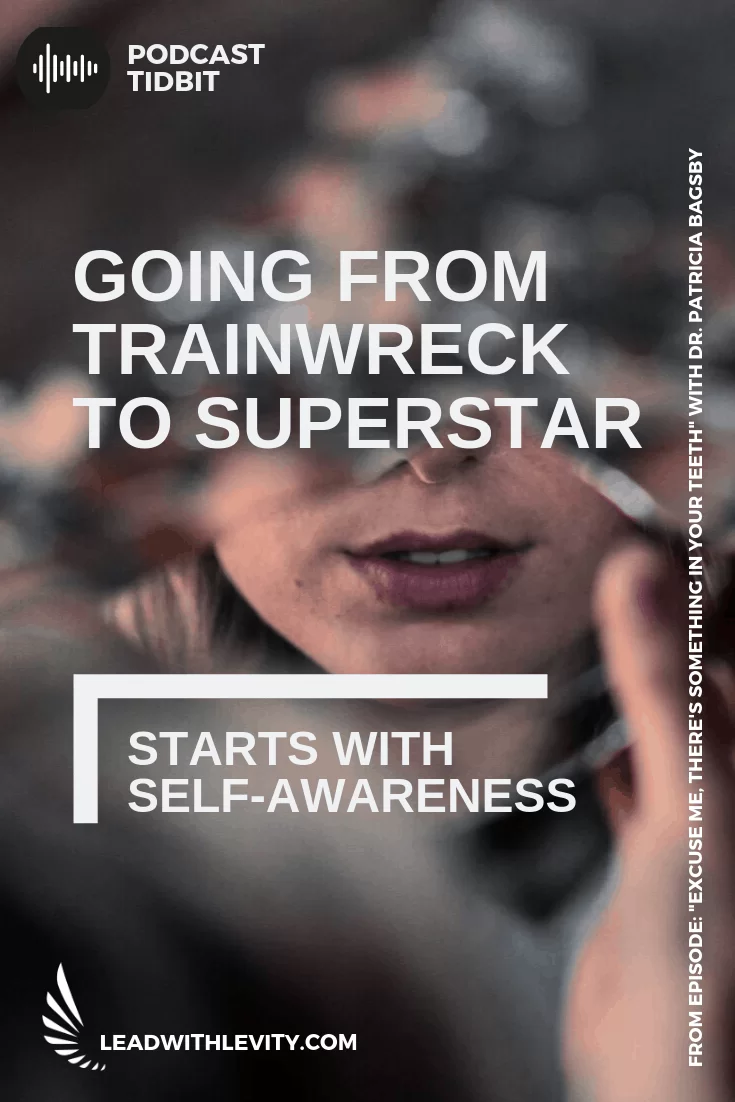Welcome to the Lead with Levity podcast. I’m your host, Dr. Heather Walker, and I’m so excited to share today’s guest with you–Kyle Gillette. Kyle is the owner of Gillette Solutions and the host of the Sage Mindset podcast. Kyle is based in Washington, and he helps small business owners lead their businesses and people with less stress and more freedom. He helps everyone get on the bus and moving in the same direction. And that’s exactly what we need today. I’m looking forward to talking to him about what he’s seeing at the leadership level and any recommendations that he has for leaders today.
In this episode, we cover:
- Leaders need to de-stress
- How leaders can empower themselves and their teams
- How leaders can help others express their ‘best selves’
- How to get the most from your next one-on-one meeting
- How to help someone on your team who has a negative outlook
- Kyle’s WISER listening model
Prefer to read instead?
Expand to view episode transcript
Heather Walker: [00:00:00] Hey there. Welcome to the Lead with Levity podcast. I’m your host, Dr. Heather Walker. I just want to welcome you and thank you for tuning in today. I’d like to take a moment to thank those who responded to the recent poll and entered the giveaway. Apparently 80% believed that managers have less fun.
Hmm, go figure. Well, that may be true. After all, they do have many more responsibilities, and the weight of it all can really kill one sense of humor if you let it. I’d like to give a special shout out to Andrea who won a $25 Amazon gift card. Everyone who entered received one free license to complete a Levity Leadership Inventory.
They all got access to a five-minute survey and customized report. It gives them feedback on their workplace and building blocks that they can work on so they can have more levity at work. I created this survey because I really wanted to give people some kind of insight into the building blocks of a great work environment that has levity feedback has been really positive.
I encourage you to check it out at LeadwithLevity.com/get-started. I’m also happy to say that we’re celebrating a year podcasting folks. We’ve had the pleasure of sharing, amazing guests, their experiences, models, practical tips, all of that with you. What I love about it is there’s so much to learn.
As we sort of peel back the curtain and give you access to highly skilled consultants, bestselling authors, and workers at leading companies who would normally charge you an arm, a leg, a foot, and a thigh for their advice. But yeah, you can get it all here for free. I think that is what’s so cool about podcasting.
I mean, for me, YouTube University has been a go-to for me and podcasting became a go-to years ago on my commute. I said, ‘wow, I want to do something to make this time valuable. I want to get back the quality in this time that I’m spending in the car and podcasting became that thing for me.’
I’m so happy to be able to share, quality guests with all of you really great information that you’d have to normally pay for. That’s one thing I love about podcasting. A year ago, I asked myself to commit to one year of podcasting. Don’t worry. I’m not about to tell you that I’m quitting today.
I want to recommit to another year. You can expect to hear from me every two weeks for another year. With the world turning upside down, I recognize that we need new solutions. I’ve spent the last year refining my ideas and building tools that can help you. If you want more levity at work, then I encourage you to try the self-assessment for yourself or get one for each team member and use it to spark a conversation about what’s working and what you can improve together.
We also have a very unique employee feedback survey that allows you to crowdsource the fun. I encourage you to check that out too. You can always connect with me on LinkedIn for more information about it. I’m also happy to announce that we’re launching into YouTube to this week. In addition to the podcast that you’ve come to know and love, we’re launching the Levity Impact Series.
These are going to be really quick two-minute videos of people sharing their levity stories and the impact that levity had on them. As we collect more and more stories, I hope to serve as a library. I want it to really be something that you can go to and check out new ideas, get inspired to try something new–and that’s launching on Wednesday.
Don’t miss any updates. Head on over to leadwithlevity.com to subscribe to the mailing list. Also, if you have any feedback or suggestions to make this next year, even better, please send them through LinkedIn. Go ahead and just message me. That’s fine. All right, well, can we get a sneak peek of today’s guest, Mr. Kyle Gillette?
It’s time for us a sneak peek.
Kyle Gillette: [00:04:55] Assessments really opened people’s eyes to who they are as a person in a different light because it’s kind of this subjective data is turning objective for them because they answered this assessment themselves, but then the data sticks out to them. I can’t tell you how many times that I’ve had conversations with business leaders where they’re in tears or they’re just overjoyed because they notice, because I noticed something about them or they learned something new about themselves, or it’s been validated.
You get all that data together. Then we create a strategy around who the people are in the organization because they each have their own wiring, their own personality traits. If you can get the teams lined up to fit that well, then things start to run a lot smoother because their gifting is fitting what they’re doing.
If they can see that their employees are humble, hungry, and smart, then they’ll see how capable their employees are and deploy them in the ways and places that best fit them. But they have to do it through a coaching method which is much more question asking rather than directing and telling.
And now on with the show.
Heather Walker: [00:06:12] I’m Dr. Heather Walker, and this is Lead with Levity. I help leaders create awesome work environments where communication is light, enjoyable and uplifting. I shed light on the power of levity at work. Imagine just how much you can get done in that kind of environment. Come explore it with me.
Welcome to the Lead with Levity podcast. I’m your host, Dr. Heather Walker, and I’m so excited to share today’s guest with you–Kyle Gillette. Kyle is based in Washington. He helps small business owners lead their businesses and people with less stress and more freedom. He helps everyone get on the bus and moving in the same direction.
That’s exactly what we need today. I’m looking forward to talking to him about what he’s seeing at the leadership level and any recommendations that he has for leaders today. Kyle, welcome.
Kyle Gillette: [00:07:23] Thank you very much, Heather. I appreciate it.
Heather Walker: [00:07:27] Can you tell me a little bit more about Gillette?
What are y’all all about? It’s not about razors, right?
Kyle Gillette: [00:07:36] No but I can use that name to my advantage. I think I get a little bit of advantage there when it comes to search engine stuff, because you type in Gillette and who knows. I might pop up. What are we about?
Yeah. Gillette Solutions focuses on leaders. It focuses on coaching small business owners and helping them. I mean you said it just right with the introduction. It’s primarily getting into the minds and the personalities of the leaders that I work with so that they can use that to their benefit.
Essentially. Let’s get into the self-awareness piece of the leader. Let’s create some accountability. Where do they need to grow? How can they empower themselves and the people around them to be the best version of themselves? All of that put together creates a more effective organization, much more efficient organization, and much happier people to be working with and working for.
Heather Walker: [00:08:36] Awesome. Are you mainly targeting individuals who are in Washington or small businesses all around the globe? Who do you typically work with?
Kyle Gillette: [00:08:49] Yeah. I’ve worked with people out of the country. I’ve worked with people out of state right now. I’m pretty spread out across the country.
I’ve got people in Chicago and people in California and people in Washington as well. Because I get to work virtual it doesn’t really matter where people live. As long as our timelines line up, we’re good to go. I really love that because using video services makes it simple to communicate with anybody.
If they have a situation and they want some coaching or some consulting, I can work with them despite their location, which is really fun. It’s cool to get to know other cultures and other people in different communities. Different business communities have different problems that they’re struggling with…different approaches.
And, that’s a lot of fun to learn from too, because what they’re struggling with may not be the same as what’s going on here, but it could eventually be. Then I can utilize that as I’m working with my clients.
We’ve definitely seen that more and more recently with the COVID situation where if you want to know what challenges you may face next month, just look to a few times zones ahead to get a picture of what’s coming.
I think never before have we seen that kind of link between different groups, and we talk about it all the time. Of course, a leadership challenge that you may have in one area, you could face that in my area too, but we’re seeing it more and more now. It’s so clear to see that linkage.
Heather Walker: [00:10:23] Yeah. Yeah. That’s nice that there is that ability to project. You can project out a little bit with seeing what other people are dealing with and be able to learn from it before it comes to you.
Why leaders? Why leadership?
Kyle Gillette: [00:10:40] You know, I have a mission. I want to help 1000 business owners to experience that freedom and experience that the stress of their lives.
When they step away from their day at work, they’re not carrying it. I’m with them 100% because as a small business owner myself, I know that I never can let go of my business a hundred percent. That’s not possible. I don’t have to carry that stress. As I work with my clients that’s a big piece of the equation so that they know they have people in their organization that can pick up any sort of slack they have.
They’re the owner ultimately, but as many people as possible in the organization also own the business with them. That’s really a big deal because life isn’t all about work. There’s a lot more to it. When business owners can step away from their work and feel good about what’s going on there and step back after the weekend or step back from a vacation it’s really empowering for them. They’ve performed so much better as a leader because they’re not carrying the weight of the world on their shoulders all the time. It’s really rewarding to watch it happen. Of course, my clients are plenty happy to let it happen or to see it happen or work towards it too.
Heather Walker: [00:11:58] Right. How do you get them to do that…to transform in that way so that they’re stepping away? When you’re an entrepreneur, you’re wearing multiple hats. You have so much that you have to get done. Depending on the size of your team, you may not have enough people to help you.
How do you get them to step away and actually care for themselves and the people around them?
Kyle Gillette: [00:12:23] Well, there’s kind of a five-step process because first of all, you have to, they have to kind of step into it more to start. Cause most of the time, the leaders that I’m working with are struggling a bit with their people because when it comes to processes and products and services, those things can be solved and they need to be solved.
The biggest problems are always the people problems. They’re way more challenging to solve. What I do is I want my clients to start to spend one to one time with the people that report to them. What I mean by that is set up meetings with your folks that you meet with for 10 to 30 minutes at the moment. It doesn’t have to be some hour and a half long lunch or something like that.
It’s a very simple 10-minute meeting where you’re conversing with your employee or your direct report. You’re not advising, you’re not doing anything like that. All you’re doing is hearing them out and getting to know their situation, their problem. Because when you do that, they feel encouraged.
They feel cared for and that opens the door to innovation, creativity, and even more trust. Ultimately, they start to own their position or responsibilities in a way better way. That’s one of the first steps they must take. Otherwise it’s way more challenging to get for the rest of them.
Heather Walker: [00:13:41] Okay. Okay. That’s step one. You said there are five steps. That sounds like a workout.
Kyle Gillette: [00:13:50] Yeah. I mean it is because it’s not a simple thing to help them work through things that they’re struggling with. Every organization is going to be different because all the people in the organizations are different.
The second step is to learn the personalities of everybody step in and give assessments. Sometimes it’s everyone and sometimes it’s just the leadership team. We’ll just go with the leadership team. I give assessments to the leadership team, and I break down those results with each member of that team.
One-on-one so they get to know themselves better objectively. Because assessments open people’s eyes to who they are as a person and in a different light. It’s kind of this subjective data is turning objective for them because they answered this assessment themselves, but then the data sticks out to them and you can be blunt with them and point out the pitfalls, but also point out the strengths.
I can’t tell you how many times. That I’ve had conversations with the business leaders where they’re in tears or they’re just overjoyed because they notice…because I noticed something about them or they’ve learned something new about themselves or it’s been validated. You get all that data together.
Then we created a strategy around who the people are in the organization, because they each have their own wiring, their own personality traits. If you can get the teams lined up to fit that well then things start to run a lot smoother because people that are gifting is fitting what they’re doing.
Heather Walker: [00:15:21] Gotcha. Gotcha. Okay. Okay.
Kyle Gillette: [00:15:24] Then as you move past that point, you’re getting to the third step of the process which is making sure that people are in the right seats. The people that are currently working there are doing a good job in there (their role of course), but also that their talents and skills match up with their responsibilities.
A lot of this is the HR work, okay, what’s the job description for this individual now…does that match up with their personality type? If it doesn’t then let’s make some changes to fix that because they’re going to burn out. If it doesn’t match the personality type and at the minimum, they’re not going to perform as well as they could.
That’s why the third step, the fourth step is teaching the business owners and the leaders to be better coaches of their employees. In other words, it’s the empowerment step…really helping their leaders to see that you wouldn’t have hired these people. If they weren’t really intelligent if they weren’t good at what they do.
There’s a Lencioni book. I don’t know if you’ve read it or not, but he talks about humble, hungry, and smart people.
A lot of the time organizations do a decent job of hiring at least two of those categories. Sometimes they miss, but if they can see that their employees are humble, hungry, and smart, then they’ll see how capable their employees are and deployed them in a ways and places that best fit them.
But they must do it through a coaching method which is much more question asking rather than a directing. Then the last step is all about shoring up procedures and policies as it relates to hiring or systems that the people are a part of that part’s pretty unique to each organization, but that’s kind of the fifth step. The first and the fourth steps are the ones that require the most work on the leadership’s part because it’s paradigm shifting generally for them.
Heather Walker: [00:17:18] Right. Especially, when you’re just starting out, you have a small business you’re going from, ‘Oh, it’s myself and possibly a significant other or myself and a best friend. Now we’re hiring strangers and we’re bringing other people into this thing that we originally created.’
Kyle Gillette: [00:17:37] Yeah. There must be some trust there.
A lot of business owners are really afraid of hiring, and they’re afraid of the hiring process. They’re not sure how to do it. One of the things that I help people with is that hiring process, because they’re so busy doing other work it’s really difficult for them to focus on the personality of the person they’re hiring.
They see the resume and the resume looks good, but really, it’s about the personality because all things are typically fairly equal when you get those resumes across the desk. It’s the fit to the culture that’s really challenging for business owners to set aside the time to think about. If I help present that info to them it gives them that buffer and that break to step back and go, “Oh, okay. Yeah, this person’s a good fit…knowledge, skills, and abilities, but let’s see, are they a good fit culturally?” Then we can have that conversation. That’s de-stressing for business owners because they’re not having to put all in all in that legwork of getting the right people in front of them.
That’s a big piece of the process that I helped them get to.
Heather Walker: [00:18:47] How do you help them identify whether someone’s a good fit for their culture, especially considering how many people are typically in these organizations?
Kyle Gillette: [00:19:01] I’ve worked with organizations that have five people, and then I’ve worked with organizations that have over a hundred people.
We run through the job description and if this is what you’re looking for in this individual, I’m helping somebody hire a project manager right now for a construction company, working on the description for them. Then as we look at the description, now we go, what are the characteristics of a person that could then pull off this job?
Okay. We’ve got that figured out. Now, what are the characteristics of everyone? You know, what does everyone in your organization need to bring to the table as it relates to values and attitude. Then you put all that together, you know, mostly in your mind, but also written down. Then as you evaluate candidates, it’s a lot easier to know what you’re looking for.
Heather Walker: [00:20:10] Hmm. Do you find that in these family owned businesses or in businesses where they kind of have that feel that the owners, the leaders have a hard time sort of letting go of control?
Kyle Gillette: [00:20:25] They do a lot of the time. They want to. Everyone that I’ve worked with wants to, and not every leader has a hard time with that, but a lot of them do. They tell me that they want to let go of control. This other organization is looking to hire a COO and the owner really wants to hire this position. Cause he knows that he’s not a great fit for that. He’s self-aware enough to realize that. But when I go to push them to make that five-year plan and to do the hiring.
You know, when do you want to hire this individual? If you’re going to give them enough time to prepare for you to step away, you probably want to hire him by this point, et cetera, et cetera. Then that’s when the brain starts to get pumped because everybody that owns a small business knows it’s another baby or it’s another child.
It’s very difficult to just let that child go. But when owners do that or when business leaders do that, just like you do with the child, it really allows that child to blossom. It really allows the business to blossom because, again, the people that I’m working with aren’t stupid and neither are the people they hired.
There’s tons of amazing people, ability, and talent just lying dormant and many of these organizations. Once the leaders recognize that and kind of get out of the way—businesses, business can flourish. Most importantly, the people can and that’s wonderful.
Heather Walker: [00:21:47] Let’s talk about levity, levity culture, and being able to let go, have fun, work, play, and get more done.
Now, do you see that happening at all in startups?
Kyle Gillette: [00:22:05] You know? I haven’t worked with a ton of businesses that are just starting, but there’s an attitude of you are a part of my family and I care about you. Whatever you’re going through, I want to support you. Whatever things you want to do, if I can, I want to participate in them.
Heather Walker: [00:22:28] That’s important.
Kyle Gillette: [00:22:30] Yeah. Organizations will put on the the annual picnic thing. It’s not just some cheap let’s show up to a restaurant type thing. It’s a big ordeal where they’re in a park, and they’re having a lot of fun, and all the kids come along.
I love to work with organizations like that. It’s not just go to work, go home, and you separate the two. They’re pretty interconnected as a whole. These people can enjoy their work, but also know that they’re loved and cared for and trusted. I think in my experience, levity comes in that way.
And the fun of that. There’s someone there that cares about you and will take care of you. Despite what’s going on right now. And, they can be trusted as a result. The business owners can be trusted and the employees can.
Heather Walker: [00:23:24] You know, that’s so important. It really is. I think that some leaders may underestimate the value of trust in their behavior and how their behavior is perceived by others in times of stress and difficulty.
It’s hard to get a job. So, you know, when you’re talking about the job market, things are tough, and people may want to stick around, and they may want to stay with you right now. because they need to, they need to stay to survive, but don’t use that as an opportunity to take advantage of the situation because they’ll remember that.
They’ll remember how they were treated. They’ll remember what your philosophy was and how you talked about the situation…how you talked about them, how you talked about the market. They’ll remember those things. Thanks. So, I wonder what is your advice to leaders who are trying to maintain a healthy culture, a healthy work environment to help people understand that they are cared for…they are trusted…they are loved even in this situation?
Kyle Gillette: [00:24:37] Yeah. I wrote about this a couple of weeks ago, and I think a lot of it is touch. What I mean by that is little touches with your employees right now. We can’t do that physically, but having these short conversations with people, having these interactions and say, “Hey, how’s it going?”
But deeper than that…if the answer fine…well, what makes today fine? Or what makes today good or what makes you well today? Then diving in just for a moment every day, dive in. Just for a moment, everybody that reports to you now, (if you run a large organization, you can’t do this with everyone) but you can with everyone that reports to you, right?
I also think getting out of the way, just getting out of their way of their process and their creativity. There are a few organizations, they’re larger ones–they have this rule that each of their employees has to spend 20% of their time on their own passion projects within the organization. Gmail is a great example of that.
Gmail is a passion project at Google. It wasn’t something that Google said, “Hey, let’s make an email platform.” I don’t remember the name of the gentleman that did it, but he put together the beginning pieces of it. Then over time, developed it into the email service. It was a passion project because the leaders over him got out of his way and let them explore.
And in a season like this, where it’s a lot of businesses are struggling to earn income and, you know, cashflow is weak and those types of things to get out of the way of your employees and allow them to be creative and think outside of the box can be super empowering for them. It breeds trust because the leader is saying, “Hey, I trust you to come up with a big idea and a good idea for my business, for this business that I’ve put blood, sweat, and tears in.”
Then that creates that co-ownership that pseudo ownership that you want from your employees. I think there also needs to be this assumption that the people that work for you are brilliant, that they have amazing ideas. They’re creative and innovative and as great leaders. What we need to do is pull it out of them because sometimes people have been so beat up and knocked down and previous employment or just personal life, but they don’t realize how brilliant and amazing they are.
When you pull that out of them it creates amazing loyalty, amazing trust and opportunity and experiences for everybody.
Heather Walker: [00:27:06] You can’t see this, but I’m like bobble head nodding my head right now. Yes, yes, yes. I agree. I agree. Let’s say that you’re a leader who has someone. On your team, who’s been beat up and who’s kind of like a little rough around the edges because of all of that.
What can you do to turn that around? How can you build someone up who has experienced some things that have led to them having a little bit more of a negative outlook?
Kyle Gillette: [00:27:37] Yeah. I had an interview with somebody on my podcast, her name’s Rhonda Delaney. I wanna give her a credit for this.
Her main thing is she calls herself the people gardener and her analogy or her metaphor. Some of us are daisies. Some of us are watermelons or some of us are whatever plant. Right. The instructions on the seed pack are very clear what you’re supposed to do.
How much watering, how much feeding, how much sunlight, those types of things. Well, people are like that too, except for we don’t have a seed pack with instructions on the back. It’s a little bit more complicated. The way that you can get around that or a better way to say it is to care, just to give a crap about the people that you’re working with and typically to care means time.
Back to what I was saying before… spending time with them, but you can kind of short circuit this in a way by doing personality type stuff because as you do the personality assessments, you break through that timeline of trying to figure out who people are and learning about them. The personality gives you that objective perspective.
Then you start to care about them from their angle. Have you ever heard of the golden rule?
Heather Walker: [00:28:56] Oh, yeah.
Kyle Gillette: [00:28:57] There’s a guy named Dr. Tony Alessandra and he twisted the golden one starts to call it the platinum rule. The golden rule says, treat others the way you want to be treated.
The platinum rule says treat us the way they want to be treated. When leaders do this, especially with those that have come into the organization, they’re kind of beat up for whatever circumstances…whether it’s the organization, they’re beat up because of stress from the organization or outside stress, whatever it is when you treat them the way they want to be treated, which is a whole other podcast episode.
But when you do that it opens them up. Again, that trust starts to come in, but time is going to be the key to this–time and care. Then you start to learn, okay, this is how this person needs to be watered. This is how much sunlight they need. Cause some people don’t want a ton of sunlight or in other words, attention.
Some people don’t need you to be constantly feeding them. They need you to leave them the heck alone because they don’t want to be fed anymore. They can feed themselves…then everything in between. Really the key is getting to know the personalities, spend the time with them to do that and shut your mouth and ask questions instead of always having a response because that’s what’s killing so much creativity and innovation in any type of organization.
Heather Walker: [00:30:15] Hmm. I love that example of plants. I never thought about it that way, but it makes so much sense. Are there any other tips that you would like to share with our listeners today?
Kyle Gillette: [00:30:34] Hmm. Let’s see. I think I have an acronym that I use for listening, and I think it’s a simple way to remember how to listen well to people and there’s a little quirky piece to it.
So, try it. Just try it because I’m thinking you might be surprised that how much respect that earns for you and trust that earns for you. But I call it the WISER way of listening. The idea is the “W” stands for Wait Your Turn. It’s the idea that just because someone asks you a question as your subordinate, as your employee has your direct report, wherever you want to title, it doesn’t mean you need to respond.
Waiting your turn is really paying attention to their body language and listening to what they need before you actually respond. Ask a question instead. There’s obviously scenarios where it’s better not to ask the question because you tell them what to do, but you’ll know intuitively as leader when it’s right to wait your turn.
There’s a way to make sure of this by doing an eight count in your mind. I do this with my kids or my wife sometimes. Also, definitely when I’m coaching sometimes it’s up to a 30 count when I’m coaching. I just am silent and it’s kind of intuitive now. At first, I did. I just do one, two, three all the way up to eight, and that gives the other person a moment to continue their thoughts.
Even if they pause that doesn’t mean it’s your turn. That’s not what that means. It means they’re thinking, especially when you ask them a great question. Wait your turn. Then the “I” is Imagine. This is especially good in friendships or in a little bit more casual situations where I’ll coworkers talking to you about things.
They’re starting to tell you a story. People love to share stories. What you want to do is engage your imagination as much as you can, because when you do that, the story becomes interesting. Even if it’s somewhat boring, it gets a little bit more interesting. If you start to. See, hear, and taste and feel their story.
If it’s so lame that you can’t do any of that, then ask them questions about that. Right. If they’re telling you a story about something that happened on the weekend, ask them, what do they see? Well, what do they hear? I know it sounds funny. But it gets you to engage them. We’re talking about trust here and pulling people out, and stories bring levity story, brings connection to people.
Using your imagination really helps. Then we have the “S”, which is Summarize, and this is simply bottom lining things. As you’re conversing with someone just bottom line, what you think you heard, even if you’re not sure…or even if you tuned out just bottom line anyway, and if you’re wrong, that’s okay.
Because they know you’re trying, which is a sign that you’re trying to listen. If they’re telling you something and you think the fork is off to the right, and that’s the direction that you think they’re trying to go, but they say, no, no, no. I’m talking about this and it’s to the left.
Who cares? At least you’re now both on the same path again. In this, there’s a lot of vulnerability for the listener to take some risks there, but it’s totally worth it. The “E” is, Engage. It’s the idea of touching, and obviously right now, we can’t very easily, but simple eye contact, the simple just pat on the shoulder, or just simple appropriate touch that allows people to know that you’re paying attention.
It’s also engaging with your body language and when you’re conversing, are you turned away from them? I’ve noticed when I sit at the dinner table, no matter who’s at my home, my wife sits on my left and my body is like 80% pointed to her. No matter who’s talking no matter what’s going on. I always, I noticed that my body’s primarily pointed to her, even if we haven’t said anything for five minutes.
I’m engaged with her. Cause that’s who I really want to engage with. Then lastly is the “R”, which is Review. Now, this is the part that I’m suggesting to try. Cause the rest is fairly easy to follow, but review is when you’re after these conversations, hopefully quickly either during which is a little weird, but is really honoring.
You can take notes, people take notes in meetings all the time. Why not do it in a conversation with somebody sharing something important with you, where you can do, as you can review the notes, you can review the conversation afterward. It’s not every conversation cause I know that’s ridiculous, but for the ones that are really big and really important, it’s valuable to jot a couple notes down about what you said, what you said and what they said, especially as it relates to feelings.
This allows you to be you’re agreeing. Listen.
Heather Walker: [00:35:37] Hmm. Thank you. Thank you. What I I’m hearing is the approach that you’re recommending for leaders is to make sure that you’re spending more time with the people on your team.
You get to know them, they get to know you, and you can build that trust. You’re learning a little bit more about their personality. What makes them tick, what they value. Then after that, you want to make sure that you’re getting the right people in the right seats.
Humble, hungry, and smart people–helping leaders to coach those people so that they can engage them and really unlock their potential. Then finally making sure that your values show up in your policies and your procedures.
Did I get that?
Kyle Gillette: [00:36:55] Nailed it. I think it boils down to small business owners or leaders of any type are leading people, not tasks.
If you’re leading an organization, even if you’re a solopreneur, you’re still leading people. Cause you’re doing something. Get away from the dang computer and get with people. Get away from the email and get out of the tasks.
Get to the people and that’s where organizations will thrive.
Heather Walker: [00:37:44] If they want to learn a little bit more about you about this wiser model and how they can increase their five steps, where should they go?
Kyle Gillette: [00:37:55] You can find me at gillettesolutions.com. That’s my website that has courses, blog posts, and stuff like that.
You can also get on a call with me at the bottom. There’s a way to chat with me there. Then you can find more content like this on my Sage Mindset podcast, which is on iTunes, Stitcher, Google Play, all those other locations. I actually have a whole episode on the WISER way to listen and various other content and interviews as well.
Easiest and best way to get ahold of me is directly. Cause I love to just network. That’s how Heather and I met just networking and networks through LinkedIn. You can find me on LinkedIn. It’s another great way to find me.
Heather Walker: [00:38:38] Yeah, it’s an awesome platform. Kyle, thank you so much. This has been wonderful, and I really do appreciate you coming on to share all of these tools and tips with our audience today.
Well, that was awesome. I feel wiser already. If you want more information about this, please check out his website. Also, don’t forget to subscribe and I’ll see you in a couple of weeks. Thanks for listening to the Lead with Levity podcast. Go to www.leadwithlevity.com to access show notes and other resources.

All people have the ability to thrive in their personal and professional lives – to obtain freedom and independence we strive to achieve. The key is learning your passions and the individual talents you possess. As these become clear, focus improves and success follows. We all have a sense of where our passions lie, though there can be ambiguity as to what drives us. We generally know our skills, strengths, and talents, though we can be unclear on how to use those abilities to realize our passions. At Gillette Solutions, we help small business owners, solopreneurs, and business professionals develop new perspectives, thought patterns, and habits to overcome fear, doubt, and improve self-confidence.I help you take control of your time, talent, and build a roadmap to increase your bottom-line. We do this through courses, behavioral analysis, and (my favorite) coaching!
About the Podcast
The Lead with Levity podcast is a show for leaders who care deeply about what makes/breaks the employee experience. Our guests are dynamic researchers, practitioners, consultants, and business leaders. We cover foundational elements that are needed to avoid forcing the fun. We also invite lively managers who lead with levity to show us how it’s done. Thanks for joining us on this journey.








